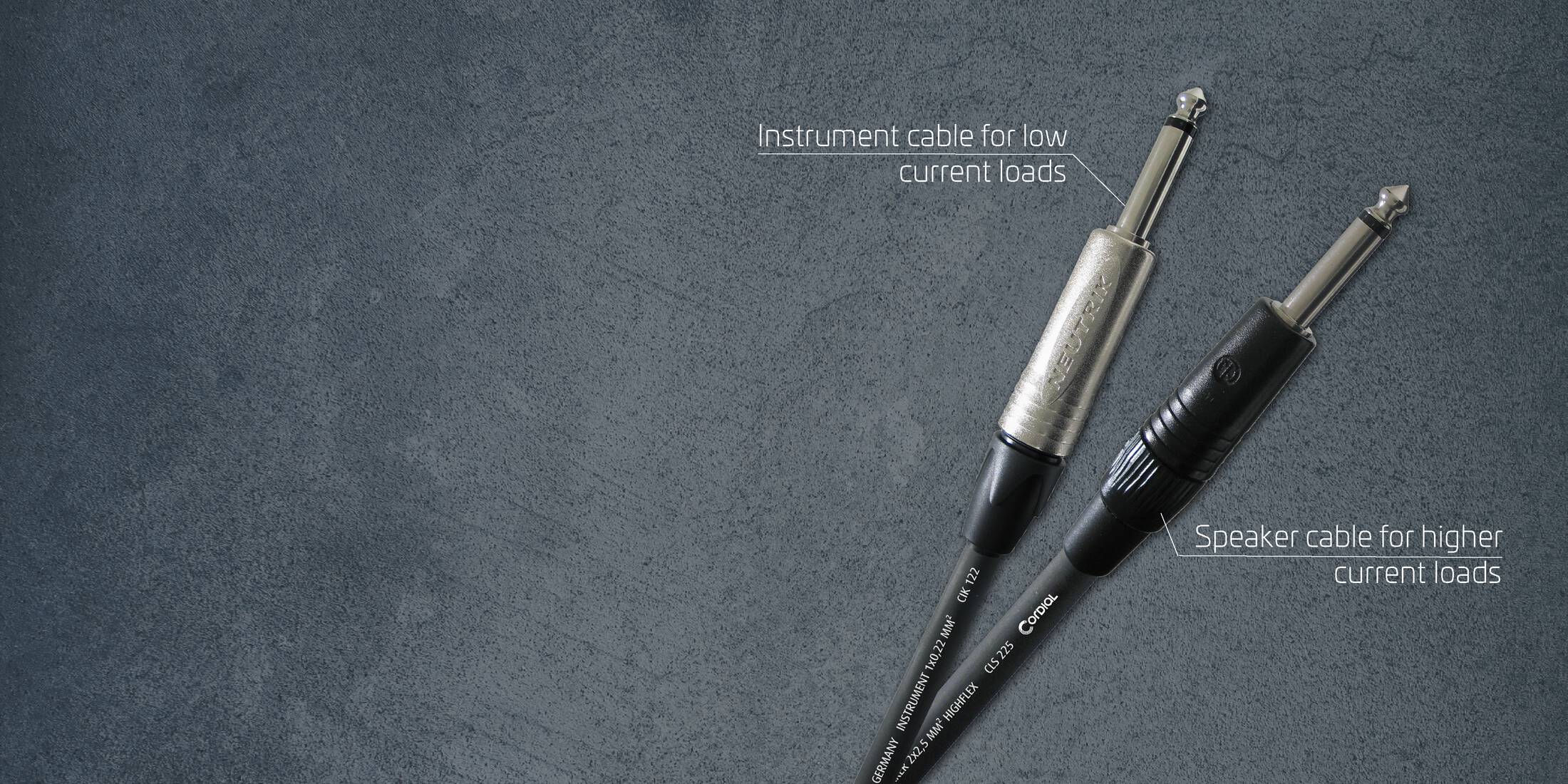Among musicians - at least as soon as they have to deal with speakers and amplifiers - it is well known that you should never mix up instrument cables and speaker cables when it comes to connecting (tube) amps and speakers. Often this is simply accepted as a fundamental rule stating that if you, for example, connect your amp top and your speaker with a guitar cable, things can get dicey. In other words: in the worst case a (possibly life-threatening!) fire hazard can occur, a short circuit can destroy the speakers and/or the amp, and, if you're lucky, only the volume is reduced. By the way, if you use a speaker cable to connect an instrument and an amp, the sound quality will "merely" be completely inadequate – another highly undesirable and unwelcome effect you’d like to avoid, wouldn’t you?
But why is this actually the case - even more so, as, unfortunately, these two cable types look so much alike at first glance?
Unlike speaker cables, instrument cables are not designed for high current flows (= high signal strengths) as their diameter is simply not large enough to take high current loads. Compared to the low voltage values occurring when connecting instruments (or microphones) and amps, you’ll need a "real juice" flow between (pre)amp and speaker(s) when transmitting the amplified low-frequency instrument signal. A guitar cable could then overheat during prolonged use and the power amp of your amplifying equipment would also be severely affected by the incorrect load (even up to the point of short-circuiting or complete destruction).
Further distinctions: All instrument/guitar cables feature inner conductors surrounded by a shield (to protect against external influences). This shielding also serves to return the audio signal and thus close the circuit (= unbalanced signal transmission). In contrast, the speaker cable contains two wires (one positive/plus and one negative/minus). Both have the same diameter and are almost always many times thicker than the wires in a guitar cable. They are each surrounded by their own shield. This is referred to as a balanced signal path.
There may also be further differences with regard to strain relief or flexibility, for example.
So, the bottom line is that everything speaks against using an instrument cable for speakers. Even though you might save a few bucks regarding the initial purchase price in the short term – it is far too high a risk to chance major damage to your equipment or even loss by fire.
